
The history of the refrigerator: ancient origins to today
Food storage and preservation has always been a necessary part of human existence, and the refrigerator in your kitchen now represents hundreds of years of refrigerator innovation. The history of the refrigerator includes natural preservation methods, technological advances and new features that help us keep our food cold more efficiently.
How did people keep food cold before refrigerators?
Before the invention of the modern day refrigerator, common practices to help keep food cold relied on natural resources, such as nearby sources of water, snow or ice, along with underground makeshift cellars. Continue reading to discover more about these ancient refrigeration techniques.
Ancient refrigeration
Depending on the climate, ancient civilizations preserved food using natural cooling methods available to them. People took advantage of rivers and lakes by storing food directly in the cold water or cutting ice for ice houses. Storage pits in the ground were filled with snow or ice and often covered with insulating materials like straw or sawdust.
Refrigeration without electricity
Ice houses on lakes and rivers were effective ways to keep food cool before the invention of electricity. If ice or snow wasn’t an option, underwater or underground storage, like cold cellars, provided refrigeration. People also began building their own iceboxes for cold storage, using chunks of ice or snow in boxes insulated with natural materials like sawdust or seaweed.
When was the icebox invented?
Manufactured iceboxes that looked closer to modern refrigerators became popular in the 1800s. These designs consisted of insulated metal or wooden cabinet-type structures with a tray or compartment that held a large block of ice. These ice blocks were regularly delivered to households with iceboxes.
History of the refrigerator timeline
Learn more about the history of the refrigerator with this refrigerator history timeline. Discover refrigerator innovation through the years.
1748 - William Cullen is the first person to observe and demonstrate artificial refrigeration via evaporative cooling
1834 - Jacob Perkins invents the first vapor compression system for refrigerators
1876 - Carl von Linde patents a new process for liquefying gases used in artificial refrigeration
1913 - Fred W. Wolf invents the first home electric refrigerator
1918 - William C. Durant begins mass producing the first home refrigerator with a self-contained compressor
- 1927 - The home refrigerator starts to see widespread popularity across the U.S.
Who invented the first refrigerator?
The first instance of artificial refrigeration was demonstrated by Scottish physician and professor William Cullen. In 1748, he observed and demonstrated the cooling effect of rapidly evaporating a liquid into gas, but did not put this method into practical use.
The modern mechanical refrigeration process we know today grew from the work of numerous inventors in the 1800s. American Jacob Perkins invented the first vapor compression system in 1834, while German professor Carl von Linde patented a new process for liquefying gasses in the late 1800s. Refrigerator innovations led to widespread commercial refrigeration at the turn of the 20th century for industries like breweries and meatpacking plants.
In 1913, American Fred W. Wolf invented the first home electric refrigerator, which featured a refrigeration unit on top of an icebox.
Mass production of domestic refrigerators began in 1918 when William C. Durant introduced the first home refrigerator with a self-contained compressor.
Why were home refrigerators invented?
Household refrigerators became a necessity as more people moved into growing cities and further away from food sources. The demand for fresh food also increased throughout the 19th century. With more distance between fresh food sources and people’s homes, it became especially important to keep perishable food cold both during transit and in homes to prolong shelf life.
How much did the first refrigerators cost?
The first home refrigeration units cost anywhere between $500 and $1,000—roughly the equivalent of $6,575 to $13,150 in today’s dollars. Consequently, domestic refrigerators were considered a luxury item during the first years of their use.
When did refrigerators become commonplace in American homes?
In the late 1920s, refrigerators started to see increased popularity in private homes. Home refrigeration became even more widespread in the 1930s following the introduction of Freon, a safer alternative to toxic gasses previously used in the vapor compression process.
What are some examples of refrigerator innovation over the years?
Since their invention over a hundred years ago, refrigerators have evolved to include updated features, such as water dispensers, a variety of new configurations and modern exterior finishes. Keep reading to learn more about how refrigerators have evolved and the innovative features that are available today.
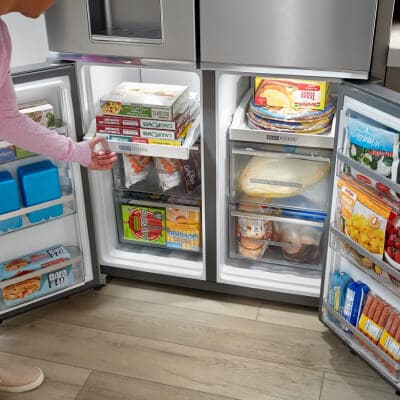
Separate freezer compartments
The growing popularity of frozen foods in the 1940s spurred the addition of freezer compartments that could fit more than ice cube trays.
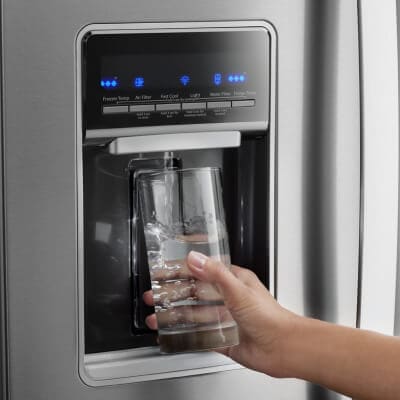
Water dispensers
Water dispensers began appearing in the 1980s, although a water dispenser was included in a custom model in 1969.
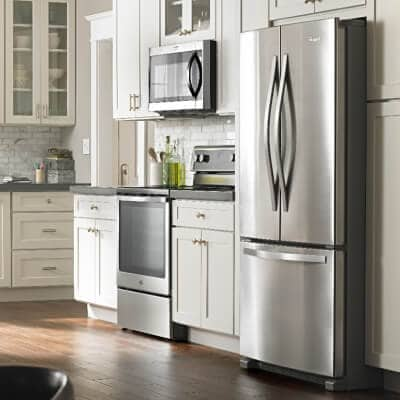
New configurations and colors
Amana brand introduced the first bottom-freezer model in 1947 and the first side-by-side refrigerator in 1949. These configurations, along with new color options in the 1950s and ’60s, offered consumers a variety of styles as refrigerators began to be seen as design pieces as well as necessary appliances. In the 1990s, French door refrigerators and stainless steel finishes became popular among homeowners looking for a more modern kitchen look.
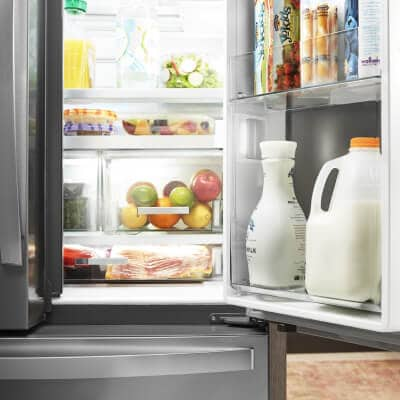
Energy efficiency
Advances in insulation and compressor technology helped refrigerators become more efficient, and the ENERGY STAR® rating system started labeling qualified refrigerators in 1996.
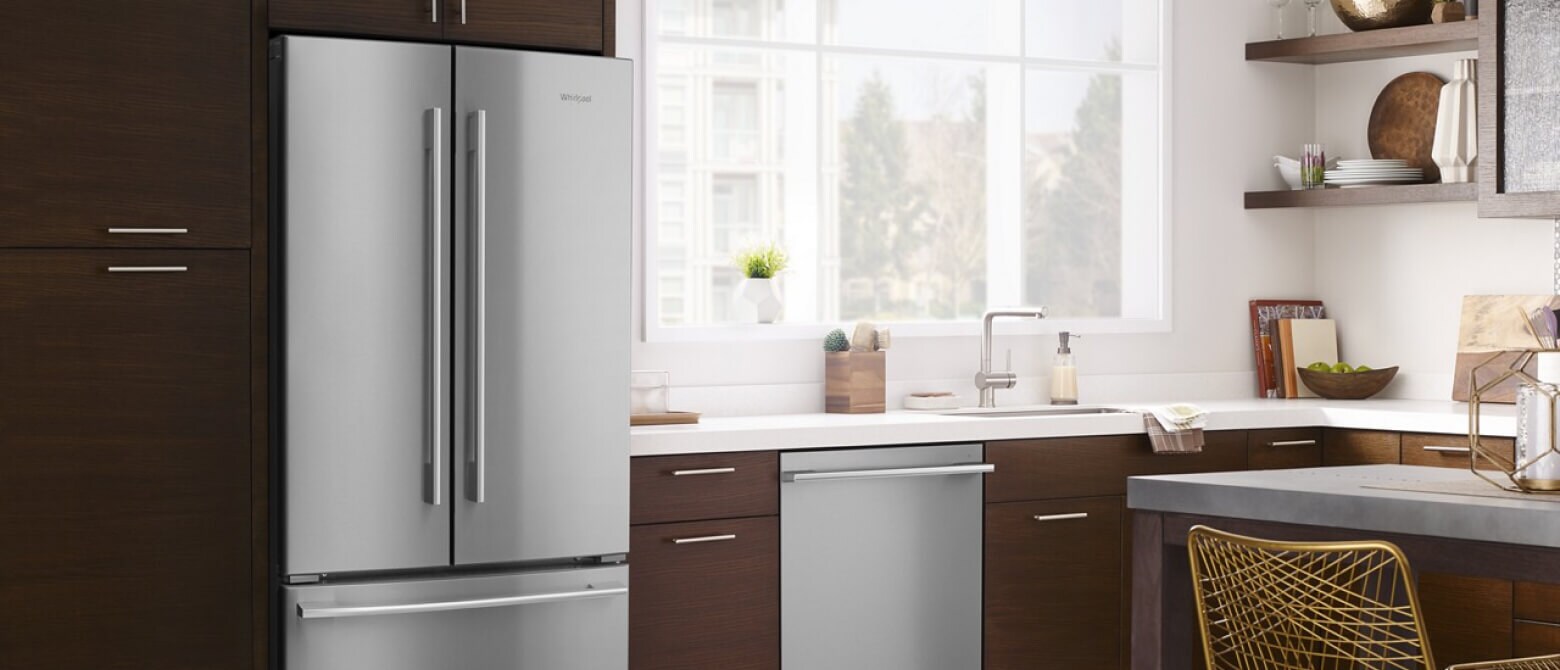

Refrigerator innovation from Whirlpool Corporation
Brands under the Whirlpool Corporation umbrella have been at the forefront of advancements in American refrigeration. Amana brand led the industry with the first side-by-side and bottom-freezer models and also patented the first self defrost refrigerator in 1954.
Today, Whirlpool brand continues to offer refrigerator innovations in select models like pantry-style shelving and adjustable storage for flexible organization, plus both large capacity fridges and small space solutions.
Shop Whirlpool® Refrigerators
Explore the endless food storage and organizational possibilities of this essential appliance by browsing the full collection of Whirlpool® Refrigerators to get your kitchen on track.
Was this article helpful? Pass it on
Find more helpful appliance info from Whirlpool brand


home heartbeat
Ready for more tips, home hacks and appliance guides?




